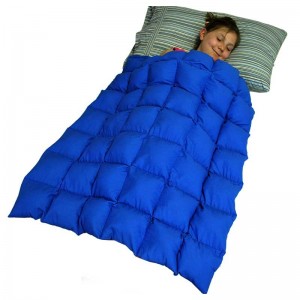 A Sensory Processing Difficulty/Disorder (SPD) is a neurological disorder that results in problems with dealing with information from the five senses: sight, smell, hearing, touch, and taste, and also from the sense of movement and the sense of position. It can be described as the brain’s lack of ability to process information from all the senses at the same time and respond meaningfully. People with the disorder usually have difficulties in communicating, engaging in repetitive actions, lack in social skills, and demonstrate slow cognitive development.
A Sensory Processing Difficulty/Disorder (SPD) is a neurological disorder that results in problems with dealing with information from the five senses: sight, smell, hearing, touch, and taste, and also from the sense of movement and the sense of position. It can be described as the brain’s lack of ability to process information from all the senses at the same time and respond meaningfully. People with the disorder usually have difficulties in communicating, engaging in repetitive actions, lack in social skills, and demonstrate slow cognitive development.
How Weighted Blankets Work
Weighted Blankets are effective calming tools of different sizes and can be made of cotton or fleece and filled with either plastic pellets or glass beads and the weight is distributed evenly. People who are affected by a sensory disorder, whether it is associated with Autism or other disorders such as Attention Deficit Disorder, Attention Deficit Hyperactivity Disorder, Cerebral Palsy, or similar conditions can usually benefit from pressure touch through weight or pressure on the body.
The main idea is that firm pressure for an extended period of time on a person’s body can soothe the mind. The blanket’s deep pressure touch will produce serotonin which will help calm a person down and result in a better state of mind. When used for bedtime, it helps induce sleep and regulates a normal sleeping pattern; it can be left overnight without any ill effects. In adults, a weighted blanket can be helpful for those with dementia, anxiety, and sleep issues.
Aside from autism and sensory disorders, weighted blankets have also been found to be helpful for other conditions such as Tourette’s syndrome, chronic pain, bi-polar disorder, Schizophrenia, Asperger’s, Restless Leg Syndrome, Downs syndrome, and a number of other conditions. Weighted blankets are also being used by soldiers in the field and also for those who have returned and are recovering.
How to Use A Weighted Blanket
- In choosing a weighted blanket, it is advised to select one that weighs 10 percent of the user’s body weight plus one pound or according to the recommendation of the doctor or therapist. The blanket needs to be able to give constant pressure without hindering the movements of the user.
- During first use of the blanket, it must be explained what the blanket is for and how it works. The pressure of the blanket may possibly create fear of being suffocated or trapped if the user is not completely aware of what it’s supposed to do.
- The blanket must be draped over the user, from neck all the way down to the feet if lying down and it should never be over the head or the face. The idea here is that the pressure over the entire body will give the optimal results.
- The blanket may also be placed over the shoulders like a poncho or shawl, or spread across the lap. Children may also have a weighted blanket over their lap while at school to gain more therapeutic pressure in their daily activities.
Choosing the Right Weighted Blanket
A weighted blanket is a significant investment, and so it is important to consider some things when choosing one.
Size
The sizes may range from toddler, twin size, full size, queen size, to king size. This may also differ depending on the manufacturer. As a rule of thumb, the weight of the blanket should be 10 percent of the person’s body weight plus one pound. For example, a person weighting 120 pounds would do well with a 13 pound blanket.
Material
The fabric of the weighted blanket also comes into play when selecting a blanket. It is vital to pick a blanket that the user would be comfortable with. Typical materials that can be found are cotton, fleece, flannel, or a combination of two. There are also a variety of fabric prints available; it is important that the user will like the blanket not only in texture, but also in look so that they would be inclined to use it more often.
There are a number of weighting materials used for different blankets, but the only material found to be safe, durable, and effective is Polypropylene. Other possible materials are corn, beans, sand, clay, and others but these may be unsafe for use, so Polypropylene pellets are the best. It is also important that the pellets are quilted into the fabric layers so that the blanket is easily machine washable. The pellets should also be evenly distributed in order to achieve the intended results.
Cost
The cost of a weighted blanket can vary from store to store, but generally, blankets with removable weights or blankets with blanket covers are much more expensive. Also, the weighting material used in the blanket will also dictate the blanket’s price. A Polypropylene blanket would fetch a higher price compared to other materials, but it ensures that the intended purpose would be attained.
It is also possible to make a weighted blanket at home, and there are guides available online that will ease you through the whole process.
